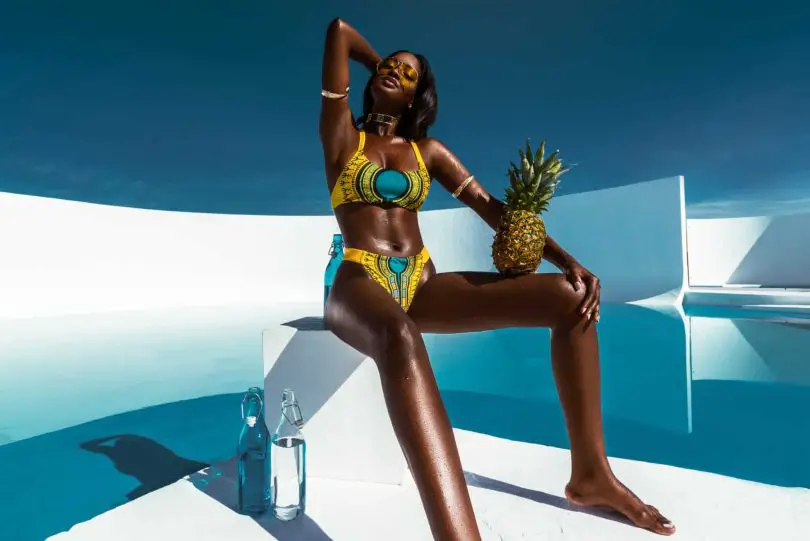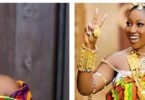Buki Ade swimwear is another of Nigeria’s epic designs in the fashion industry. While many Nigerian fashion designers concentrate on the whole body attire, Buki Ade focuses on swimwear.
The Nigerian-American designer incorporates the African cultural feeling into the swimwear design. Ade completely revamped and reinvented the swimsuit market by incorporating designs that are culturally friendly.
Table of Contents
Who is the Nigerian American Designer Behind Buki Ade Swimwear?
Her family relocated from Nigeria to the United States when she was eight years old. She was born in Nigeria but her relocation to the US was the beginning of Buki Ade swimwear.
Ideally, Ade was to study medicine and support her family with a “guaranteed” income because she was the firstborn in her traditional Nigerian family. However, she chose to pursue other interests.

Buki Ade Swimwear, Photo/Buki Ade
Her response was to enrol in nursing school, which she dutifully did after that. At the end of the day, she opted to pursue her own creative path.
How Did Buki Ade Creativity Start?
Ade had numerous opportunities to express herself creatively through her clothing as she grew up. It was a springboard for Buki Ade swimwear.
Making personalized clothes for special events is typical in the Nigerian community, and Ade’s designs were always cutting edge, pushing the boundaries of contemporary fashion. Even during her adolescent years, she was not afraid to express herself via her personal style in anything she wore.
Those who knew her best might tell you about the numerous ways she exhibited all of the characteristics of a successful designer at an early age. Ade’s natural passion for fashion could be seen in everything she did – from fading denim to recreating garments and shoes.
When she was 12, she received her first notebook, and it was at the age of 13 that she realized she had a flair for design. And the journey for today’s Buki Ade swimwear began.
Ade recalls learning the fundamentals of sewing by seeing her grandmother work for hours on end when she was a little girl.
It was in her blood, as she frequently credits her two fashion designer aunts. She affectionately refers to as her “superheroes,” with her success.
What Inspired Buki Ade Swimwear Designs?
Ade was dissatisfied with the lack of variety in the designs of the bikinis she was wearing while on vacation. The Afrocentric exceptionality she wished to show was not represented by any of the available swimwear.
She pointed to a lack of diversity in the industry, more specifically, a death of African designers in the sector. The introduction Buki Ade swimwear first collection in 2013 marked the beginning of her role as a solution to this challenge.
Ade previously avoided utilizing prints in her designs until the release of Asante (BFyne’s first Ghanaian kente print swimsuit). In making the decision to push the edge with that bikini, she and her team had no clue what a profound influence it would have on the company.
In 2017, BFyne launched the Sahara line as a result of their experience. Swimsuits with traditional dashiki patterns featured in this collection made the internet go crazy. BFyne introduced a new type of swimsuit construction that had never been seen before in the industry. Everything about the bikinis was flawlessly styled.
Models posed drenched in gold jewellery and accessories as if they had been kissed by Midas, a vibe that Ade is enthusiastic about incorporating throughout the overall BFyne design.
The company’s main store in Miami, Florida, opened its doors in January 2019. She has produced patterns and swimsuits for more than ten collections to date.
And she has no plans to stop there. She has plans to launch her first ready-to-wear collection in the near future!

Buki Ade Swimwear. Photo/The NativeMag
What is Unique About Buki Ade Swimwear?
Every piece of hand-sewn clothing is designed specifically for you. The fiercely fashion-forward, cultural connoisseur that you are.
BFyne bikinis are renowned for their fascinating designs and tempting colours. They are designed to draw attention to your curves.
At BFyne, body positivity is seen as a fundamental value. On the catwalk, you will constantly see models of different shapes, sizes, and ethnicities strut their stuff.
Ade, draws inspiration for her textile prints and her love of life and exposure to different cultures. As a Nigerian-American, she combines the diversity of West African influences with the pictures that depict events from her everyday life to create a cohesive whole.








